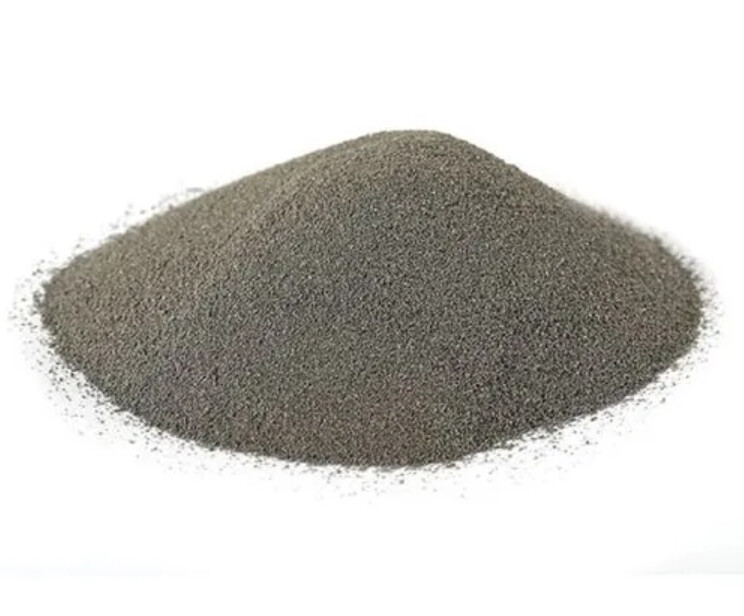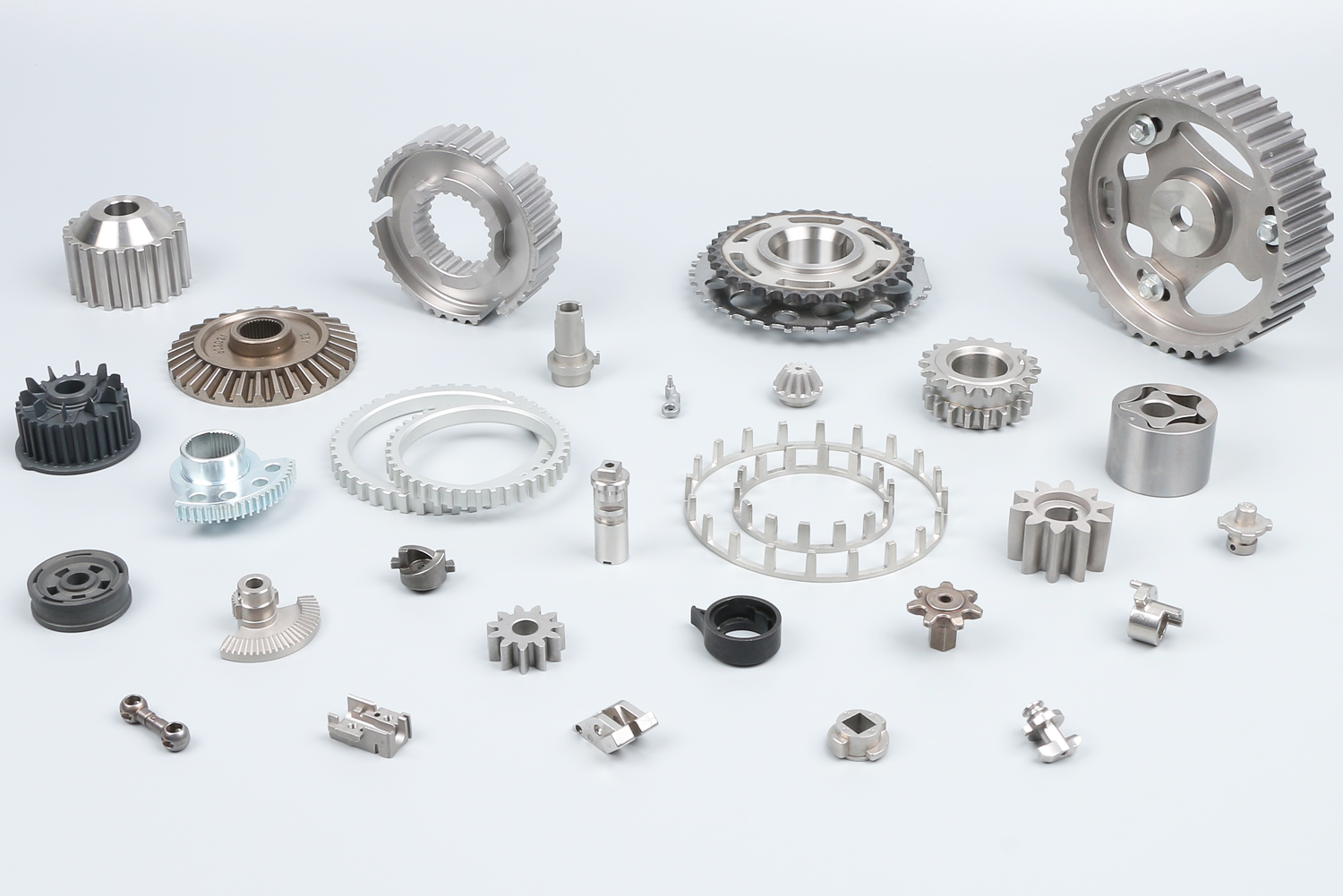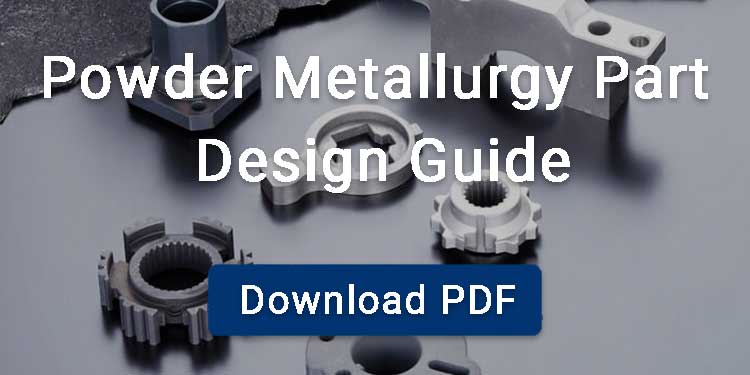Iron powder is a metal powder with particle size usually between 5-250μm (about 2500-60 mesh).
According to statistics, the market size for ferrous metal powder reached USD 6.77 billion in 2024.
Iron powder has a wide range of applications, such as powder metallurgy, additive manufacturing, metal injection molding, surface coating, cutting, brazing, welding.

Contents
How to Make Iron Powder?
Metal powder manufacturers usually make iron powder through atomization process, reduction, chemical decomposition and electrolysis.
Let’s take a look at the characteristics and applications of these iron powders.
Atomized Iron Powder
Atomized metal powders are produced by water atomization or gas atomization process. In the atomization process, the molten metal is broken up into metal droplets by high-pressure gas or water impact, and then solidified into powder.
Water atomized iron powder is cost-effective, but the particle shape is irregular and the oxygen content is slightly higher. Water atomized iron powders and steel powders are usually utilized in conventional powder metallurgy process.

Carbonyl Iron Powder
Carbonyl iron powder is quite fine, so it is suitable for metal injection molding (MIM) process.
This iron powder is produced by reacting iron with carbon monoxide to form Fe(CO)₅ (carbonyl iron), which is then thermally decomposed.
The particle diameter of carbonyl iron powder is usually between 1-8 microns and the appearance is spherical. In addition, PM and electronics manufacturers apply carbonyl iron powder in soft magnetic materials and microwave absorbing materials.

Reduced Iron Powder
Your material manufacturers create reduced iron powder by hydrogen reduction of iron oxide. Its porous nature earns it the name sponge iron powder.
The diameter of reduced iron powder particles is generally above 20μm. Due to its irregular appearance, the powder can be mechanically locked together, which is conducive to making high-strength green compact. Because this iron powder is porous, it is also suitable as a raw material for sintered oil impregnated bushings.
Manufacturers also use it to produce diamond tools, welding electrodes, and lithium iron phosphate batteries.
Electrolytic Iron Powder
Electrolytic iron powder is produced by an electrochemical process and has extremely high purity of more than 99%. .
Currently, the market size of electrolytic iron powder is small and is used in applications with high compressibility, high purity and high magnetic properties.
What is Iron Powder Used for?
Iron powder and its alloy powder have a wide range of applications, including metallurgy, 3D printing, lithium batteries, etc.
Powder Metallurgy
Powder metallurgy is a recognized green manufacturing process in which metal powders are compacted under high pressure and fused together through sintering to form solid components.
Iron powder is the most common raw material for powder metallurgy parts, so it has good mechanical strength, good green density, and relatively low price.
Common sintered iron parts include:
- F-0000 ABS sensor ring
- water pump flanges & pulleys
- oil impregnated bushings
- shock absorber components
- impeller
- powder metal gears
- oil pump rotors & gears

Sintered Filter
Iron powders are also the raw materials for producing sintered porous filters, which are porous devices characterized by interconnected pores throughout their structure. With fine filtration accuracy, high mechanical strength, and long service life, sintered filters provide reliable filtration solutions.
MIM
Metal injection molding is a combination of powder metallurgy and injection molding.
Unlike traditional powder metal parts, MIM parts can achieve high density up to 99%. Limited by injection molding equipment, MIM usually produces precision parts weighing less than 100g.
MIM uses fine powder, such as atomized iron powder and carbonyl iron powder.

Surface Coating
Your metal parts can be surface coated with metal powder to improve their wear resistance, corrosion resistance and thermal insulation etc.
Additive Manufacturing
You might know additive manufacturing (AM), also known as 3D printing, is a net-shape process with high material utilization. In this process, your part is built up layer by layer by laying down ferrous metal powder.
With the metal additive manufacturing process, you can prototype the components without the need for a mold.
Welding
It is well known that adding iron powder to welding rods, flux-cored wires and metal-cored wires can improve welding quality.
- Improve welding characteristics
Adding reduced iron powder to the covering electrode coating helps improve the welding arc to be smoother and more stable.
- Improve weld metal quality
Adding high-purity iron powder to the welding electrode helps improve the weld quality.
- increase weld efficiency
Manufacturers add iron powder to the covering electrode coating to not only improve metal recovery but also use the heat during welding more efficiently.
Soft Magnetic Composites (SMC)
Soft magnetic composites are made of iron powder particles coated with an electrically insulating layer such as epoxy resin or acrylic. SMC is commonly used in automotive traction motors, pumps and air conditioning compressors.
The properties of iron-based sintered soft magnetic materials are affected by the purity of the powder, the alloy composition and the material density.
Food Fortification
Food-grade iron powder serves as a dietary supplement and is commonly used to fortify cereal products. For instance, countries like the United States and Canada mandate iron fortification in staple foods such as wheat flour.
Comparing Iron Metal Powders
The following table shows the characteristics of different iron powders, such as shape, particle diameter, and application.
| Type | Atomized Iron Powder | Carbonyl Iron Powder | Reduced Iron Powder | Electrolytic Iron Powder |
|---|---|---|---|---|
| Shape | Near-Spherical, Irregular | Spherical | Irregular | Flaky |
| Particle Size D90 | < 150 μm | < 10 μm | < 150 μm | < 10 μm |
| Purity | High | Very High | High | Very High |
| Application | PM, AM, MIM | PM, Electronics, MIM | PM, Soft Magnetic Materials | Electromagnetic, Chemical Catalysts |
Iron Powder Manufacturer
Höganäs
Based in Sweden, Höganäs is a leading global metal powder manufacturer. They offer a wide range of metal powders including iron powder, steel powder, stainless steel powder, copper powder, titanium alloy powder, nickel alloy powder, etc.
Their metal powders provide solutions for various industries such as powder metallurgy, MIM, AM, welding, soft magnetic materials, hot isostatic pressing, and friction materials.
Rio Tinto Metal Powder
Rio Tinto Metal Powder, formerly Quebec Metal Powders, is located in Canada and Australia and provides iron powder, steel powder, pre-alloyed powder, etc.
They provide materials for powder metallurgy, additive manufacturing, batteries and energy storage applications.
GKN Powders – Hoeganaes
GKN Hoeganaes is a well-known metal powder supplier, providing a range of steel powders for PM, AM, and lithium batteries, etc.
Iron Powder Price
Below are some prices for iron powder and steel powder.
| Material Model | Price (USD/Ton) | Mesh | Chemical Composition |
|---|---|---|---|
| F-0005 | $910 | 80 | Bal: Fe |
| FC-0205 | $1,129 | 100 | Cu: 1.5-3.9%, Bal: Fe |
| FN-0205 | $2,249 | 100 | Cu: 0-2.5%, Ni: 1-3%, Bal: Fe |
| FD-0205 | $3,256 | 100 | Cu: 1.3-1.7%, Ni: 1.55-1.95%, Mo: 0.4-0.6%, Bal: Fe |
| FLC-4608 | $2,552 | 100 | Cu: 1-3%, Ni: 1.6-2%, Mo: 0.43-0.60%, Bal: Fe |
Iron Powder Market
China is a manufacturing center for new energy vehicles and electronic products, and is the main contributor to the growth of the iron powder market in the Asia-Pacific region.
The rapid development of additive manufacturing in the United States is expected to drive the development of the North American metal powder market.
Germany is a leader in traditional automobile manufacturing, and the demand for vehicle weight reduction and complex shapes of parts is expected to drive the European metal powder market

BLUE is a dedicated supplier of powder metallurgy with manufacturing excellence, supplying standard PM parts without tooling fees. The sintered parts manufacturing at our facilities undergo stringent controls at each step of the process.
FAQ
1. What are the Differences of Iron Powder and Steel Powder?
The main differences between iron powder and steel powder are as follows:
Iron powder consists of pure elemental iron (Fe) with very few impurities and very low carbon content, usually less than 0.1%. Steel powder contains iron alloyed with carbon and other alloy elements like chromium, nickel, molybdenum, or manganese.
Iron powder has high magnetic properties and good ductility. Compared with steel powder, iron powder has lower tensile strength and hardness.
Steel powder has higher strength, hardness and durability. And specific mechanical and physical properties can be customized by adjusting alloying elements。
2. What Safety Precautions should You Take when Handling Iron Powders?
When processing or transporting iron powder, you may encounter powder flying, and fine powder might be inhaled into the lungs. So workers need to wear masks, goggles, gloves, etc. to ensure safety.
In addition, metal powders with smaller particles need to pay attention to the potential risk of spontaneous combustion, so special attention needs to be paid when handling and storing.
3. How to Convert Mesh to Microns?
The particle size of metal powders is usually expressed in microns or mesh. Below is a powder particle size conversion table.
| Mesh | Micron (μm) |
|---|---|
| 4 | 4760 |
| 6 | 3360 |
| 8 | 2380 |
| 12 | 1680 |
| 16 | 1190 |
| 20 | 840 |
| 30 | 590 |
| 35 | 500 |
| 40 | 420 |
| 45 | 354 |
| 50 | 297 |
| 60 | 250 |
| 70 | 210 |
| 80 | 177 |
| 100 | 149 |
| 120 | 125 |
| 140 | 105 |
| 170 | 88 |
| 200 | 74 |
| 230 | 62 |
| 270 | 53 |
| 325 | 44 |
| 400 | 37 |
| 450 | 32 |
| 500 | 25 |
| 625 | 20 |
| 1250 | 10 |
| 2500 | 5 |



